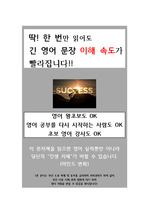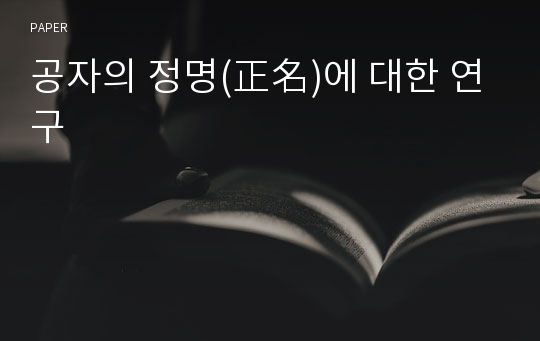* 본 문서는 배포용으로 복사 및 편집이 불가합니다.
서지정보
ㆍ발행기관 : 서강대학교 철학연구소
ㆍ수록지정보 : 철학논집
ㆍ저자명 : 이권
ㆍ저자명 : 이권
목차
Ⅰ. 서론Ⅱ. 예(禮)와 정명(正名)
Ⅲ. 인(仁)과 정명(正名)
Ⅳ. 충서(忠恕)와 정명(正名)
Ⅴ. 결 론
한국어 초록
본 논문에서는 공자의 정명사상에 대한 기존의 연구가 왜 ‘임금이임금다워야 하는지’에 대한 체계내적 근거나 이유를 제시하지 못한다
고 보고, 그 대안적 설명을 모색하고자 하였다. 기존의 설명들은 공자
가 임금이 임금다워야 한다고 말할 때의 내재적 맥락을 충실히 복원하
기 보다는 도식적인 개념의 틀로 정명을 분석하고 있기 때문에 공자의
정명사상의 본래적 의미를 파악하는데 실패하고 있다. 여기서는 논어
라는 텍스트가 공자의 사상을 일관성 있게 드러내고 있다는 전제하에
정명을 논어 전체를 유기적으로 연결시켜줄 수 있는 하나의 키워드로
재해석해 보았다.
본 논문의 결론의 다음과 같다. 첫째, 분별을 핵심으로 하는 예법에
는 名과 名의 관계가 투영되어 있다. 여기서 名은 위에 대한 名과 名
이 요구하는 分이 결합된 것이다. 따라서 정명은 명분론의 맥락에서
해석되며, 이에 따르면 정명은 분을 명에 일치시키라는 주장이다. 둘
째, 예의 근본인 인은 관계의 맥락에서 제기된 관념으로서 사람다움을
말한다. 사람다움은 관계가 요구하는 바를 온전히 수행할 때 성취된다.
따라서 인은 정명의 실현이고 정명은 인을 실현하는 방법이다. 셋째,
정명이 함축하는 명명관계에서는 명과 명이 하나로 묶이는 경우에도
명들 사이의 차이와 구별은 사라지지 않는다. 덕목은 관계가 요구하는
역할을 온전히 해낼 때 확인되는 것이다. 넷째, 충서(忠恕)는 공자의
일관지도(一貫之道)이다. 충서의 충(忠)은 최선을 다하는 것[盡己]으로
서, 공동체의 가치에 비추어 개인적인 요구를 누르고 그 가치를 예를
통해 구현[克己復禮]해야 가능한 사태이며, 타인과의 관계가 자기에게
요구하는 것을 타인에게 실천하는 것[推己及人] 즉 서(恕)로 나타난다.
따라서 충과 서는 본질적으로 그 내용이 같다. 다섯째, 공자의 철학에
서 도덕의 객관적 근거 또는 보편성은 인(仁)에서 확보된다. 그런데 충
서는 인을 실천하는 방법이고 인은 구체적인 행위 속에 자리하는 덕목
이다. 따라서 충서라는 행위원칙은 도덕적 행위의 객관적이고 보편적
인 근거가 된다. 이로부터 다음과 같은 점을 확인할 수 있다. (1)충서
는 마음의 맥락에서 말해진 원칙이 아니라 행위의 맥락에서 제기된 원
칙이다. (2)충서개념을 말하면서 도덕의 근거와 도덕의 실천을 구별하
는 입장은 공자의 생각과는 거리가 멀다. (3)충서는 타인과의 관계차원
에서 제기된 개념이다. 여섯째, 충서와 정명은 동일한 원리에 대한 다
른 표현이고, 그 내용은 매 순간순간마다 관계가 요구하는 바를 행위
속에서 온전히 구현하라는 것이다.
영어 초록
This paper aims to give an alternative philosophical explanation on aKongzi's conviction, "a King should be kingly," taking a critical stance
against philosophical solutions hitherto studied on the question, since I
believe they have failed to provide reasonable grounds, which should
consistently and organically fit in the philosophical context of Kongzi. In
my view, the solutions seem unsuccessful in grasping the intrinsic
meaning of a Kongzi's theory, Rectification of names (zhengming 正名),
by uncritically accepting terms and schemes and analyzing them on the
conventional understanding. Assuming that the Analects (lunyu 論語) is
textually and logically consistent in presenting Kongzi's philosophy, I
attempt to reinterpret the theory of Rectification as a philosophical key to
organically link and explain Kongzi's ideas in the Analects.
In conclusion, my arguments are as follows: First, the relations among
names (mingming guanshi 名名關係) are reflected into the ancient
Chinese Ritual system which centers around discriminations. The theory of
Rectification should be understood in the context of discussion of names
and separations of one's social or familial status, and thus it suggests that
one's status must fit in its name. Second, Humanness (ren 仁) is an idea
raised in the context of human relationship. This can be accomplished
only when a man completes his responsibilities which are asked in the
relationship with others around himself. Thus, the Humanness is a
potential realization of the Rectification, and Rectification is a necessary
way to complete the Humanness. Third, in the relationship among names,
which is represented by Rectification, differences and distinction among
names cannot perish, even when names are combined. Fourth, Doing one's
utmost and Putting oneself in the other's place (zhongshu n a is the Dao
of Kongzi which is bound together with one continuous strand. The
Doing one's utmost (zhong n) can be accomplished only when one's own
prisate desire a be acccommunal values 克己復禮 is successfully
overcome, and it is manifested as the Putting oneself in the other place
(shu a, which is the same as that a man practices his responsibilities in
the relationship with others 推己及人. Thus the zhong n and the shu
are 己及人. Thusally same in contents. Fifth, the objecti(zhond universal
ifested for Kongzi's moral philosophy is ace ired from the value,
Humanness. Doing one's utmost and Putting oneself in the other's place is
a way to practice the Humanness, and practicing the value cannot be
departed from the human reality. From this, the following are
acknowledgeable: (1) Doing one's utmost and Putting oneself in the
other's place is a principle for human behavioral actualization, not for
cultivating human mind. (2) Regarding the notion, Doing one's utmost and
Putting oneself in the other's place, a standpoint to differentiate moral
behaviors from moral grounds is not Confucian. (3) Doing one's utmost
and Putting oneself in the other's place was raised in the context of
relationship with others. Last but not least, Rectification and Doing one's
utmost/Putting oneself in the other's place are same in contents, and
different in their manifestations. They mean that a human must wholly
actualize in his actions the responsibilities required every time in life.
참고 자료
없음태그
"철학논집"의 다른 논문
 미래 인터넷(Future Intetnet) 기술의 윤리 문제34페이지
미래 인터넷(Future Intetnet) 기술의 윤리 문제34페이지 어우러짐(harmonia)으로서의 혼33페이지
어우러짐(harmonia)으로서의 혼33페이지 신경윤리학의 등장과 쟁점들30페이지
신경윤리학의 등장과 쟁점들30페이지 과학적 탐구와 기술의 윤리25페이지
과학적 탐구와 기술의 윤리25페이지 과학과 종교29페이지
과학과 종교29페이지



























